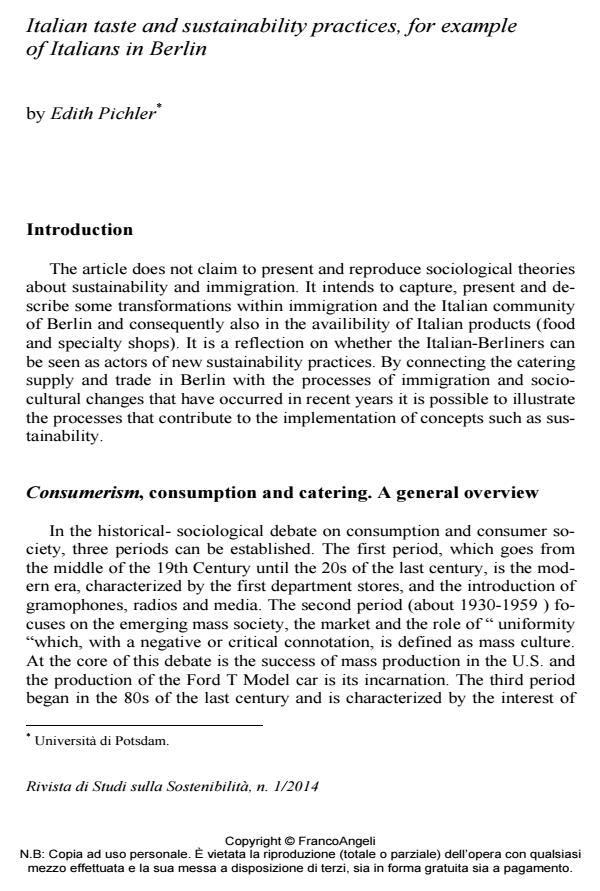Italian taste and sustainability practices, for example of Italians in Berlin
Journal title RIVISTA DI STUDI SULLA SOSTENIBILITA'
Author/s Edith Pichler
Publishing Year 2014 Issue 2014/1
Language English Pages 10 P. 169-178 File size 144 KB
DOI 10.3280/RISS2014-001010
DOI is like a bar code for intellectual property: to have more infomation
click here
Below, you can see the article first page
If you want to buy this article in PDF format, you can do it, following the instructions to buy download credits

FrancoAngeli is member of Publishers International Linking Association, Inc (PILA), a not-for-profit association which run the CrossRef service enabling links to and from online scholarly content.
Germany, as well as Italy and the rest of Western Europe, after the Second World War experiences Americanization of a consumption and becomes a consumer society. Italian Catering successfully develops and finds its place in this new of consumption democracy. In the meantime, we can observe a paradigm shift with regard not only to the debate on consumption and consumerism but also to its practices, where the ecological consequences of consumerism have now taken on a global aspect.
Keywords: Consumerism-globalisation, migration and new mobility, Berlin, lifestyle, ecology, regionalism
Edith Pichler, Italian taste and sustainability practices, for example of Italians in Berlin in "RIVISTA DI STUDI SULLA SOSTENIBILITA'" 1/2014, pp 169-178, DOI: 10.3280/RISS2014-001010